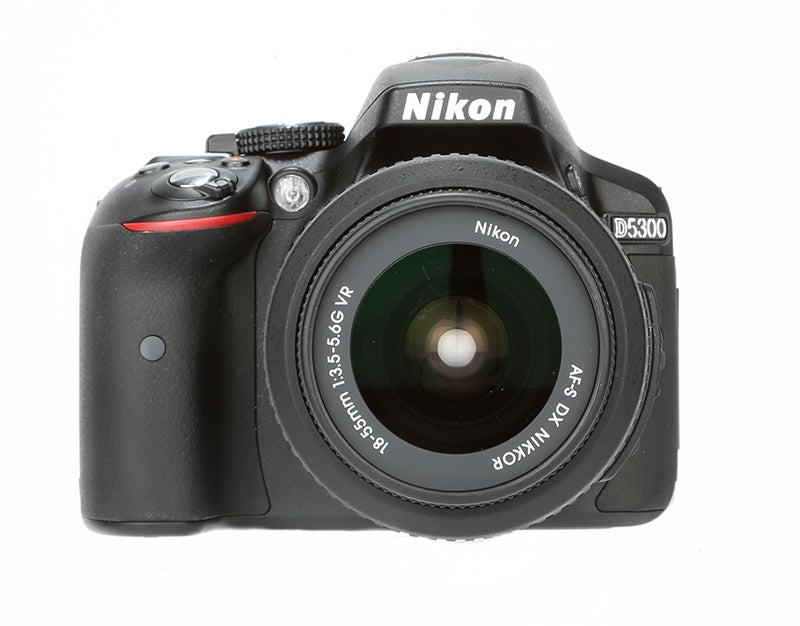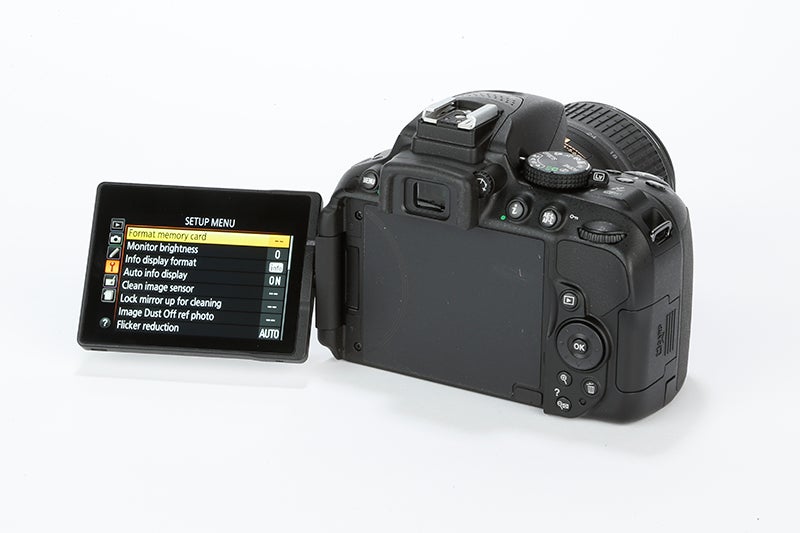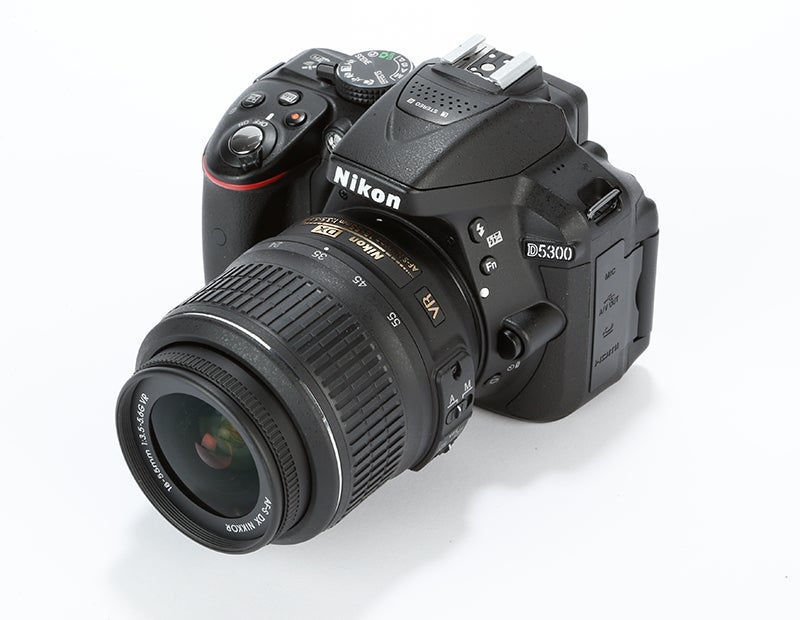Nikon D5300 Review - The Nikon D5300 succeeds the D5200 at the top of Nikon's entry-level range. Find out how it gets on in the What Digital Camera Nikon D5300 review
Nikon D5300 Review
Nikon D5300 Review – Performance

Prior to the Nikon D5300, Wi-fi has only been supported on previous Nikon DSLRs by the use of an optional WU-1a wireless mobile adapter (£48). Its been a long time coming, but the introduction of built-in Wi-fi on the D5300 suggests we can expect it to appear built into other Nikon DSLRs in the future.
To take advantage of the wireless connectivity, Nikon’s Wireless Mobile Utility app (WMU) needs to be installed – a free download for both iOS and Android operating systems. Regrettably, unlike other manufacturers’ apps, many of the common settings such as aperture, shutter speed, ISO and exposure compensation can’t be controlled via the app. Instead, the app is very basic in terms of its appearance and functionality.
Despite shutter speed and aperture settings being displayed beneath the live view feed (of which there’s no lag or delay we must add) there’s no way of accessing them to change them, meaning the app is essentially acting as a remote trigger to fire the shutter in its take photos mode, nothing more.
Autofocus can be controlled from the app provided you’re using a lens that features an inbuilt motor, but rather disappointingly it’s not possible to change the cameras settings on the fly and instead you have to go to the menu options and switch the shoot mode to camera, adjust your settings, and then switch it back to WMU – a painstaking task that should be made a whole lot easier.

App usage
By far the best use of the app is for viewing images you’ve already taken. You’re given the option to select the photos you wish to download to your mobile device at either the original size or a recommended size which down samples images to a smaller resolution.
After download the images will appear in the devices camera roll from which they can be uploaded to social media or exported via email. One other observation was the incorrect orientation of portrait images in the app when viewing shots prior to downloading them. On more than one occasion we found it frustrating having to turn our mobile device to view the image the right way, only for the auto-rotate function on our device to rotate it by 90-degrees.
Much like the D5200, the D5300’s autofocus system impresses, especially when it’s paired with a premium lenses in the DX range. While the 18-55mm kit lens will be sufficient for beginners, its fairly noisy operation in AF mode can interrupt audio footage when recording HD video and there’s a tendency for it to hunt back and forth too in low-light. As before, the 3D-tracking mode worked well yet again on test, managing to keep apace with high-speed rally cars to ensure pin-sharp results were delivered shot after shot during a continuous burst.
The coverage of AF points in the frame is excellent for a camera of its pedigree and its relatively quick to move the AF point around the frame using the d-pad when composing through the viewfinder. The same can’t be said for Live View however and with its lack of touchscreen there’s a long delay in getting the AF point where you need it to be.
That, combined with the fact that when the mirror is flipped out of the way it relies on contrast-detect AF, it’s plainly more sluggish at acquiring focus in Live View than DSLRs implementing the latest technology of building phase-detect pixels into the sensor.

Video AF speed
The outcome of this is that it also has an affect on focusing speed when shooting video. Set to Full-time-servo AF (AF-F) we’d like to see the lock-on speed faster for video – an obvious area for improvement on a camera of this type and Nikon’s other DSLRs going forward. Loaded with a SanDisk Extreme Pro card, the D5300 is capable of shooting six frames at its maximum permitted burst of 5fps set to Raw+JPEG.
This figure is exactly the same as recorded previously on the D5200 and a second after the buffer interrupted shooting, the camera fired again with a shot-to-shot time of 1.5secs. To shoot an unlimited number of frames at 5fps on the D5300 you can do so by using one of the three JPEG compression settings (Fine, Norm, Basic). Interestingly, these performance tests prove the speed and buffer performance is little different to the D5200, despite it allegedly having more processing power with the inclusion of the new DIGIC 4 image processor.




